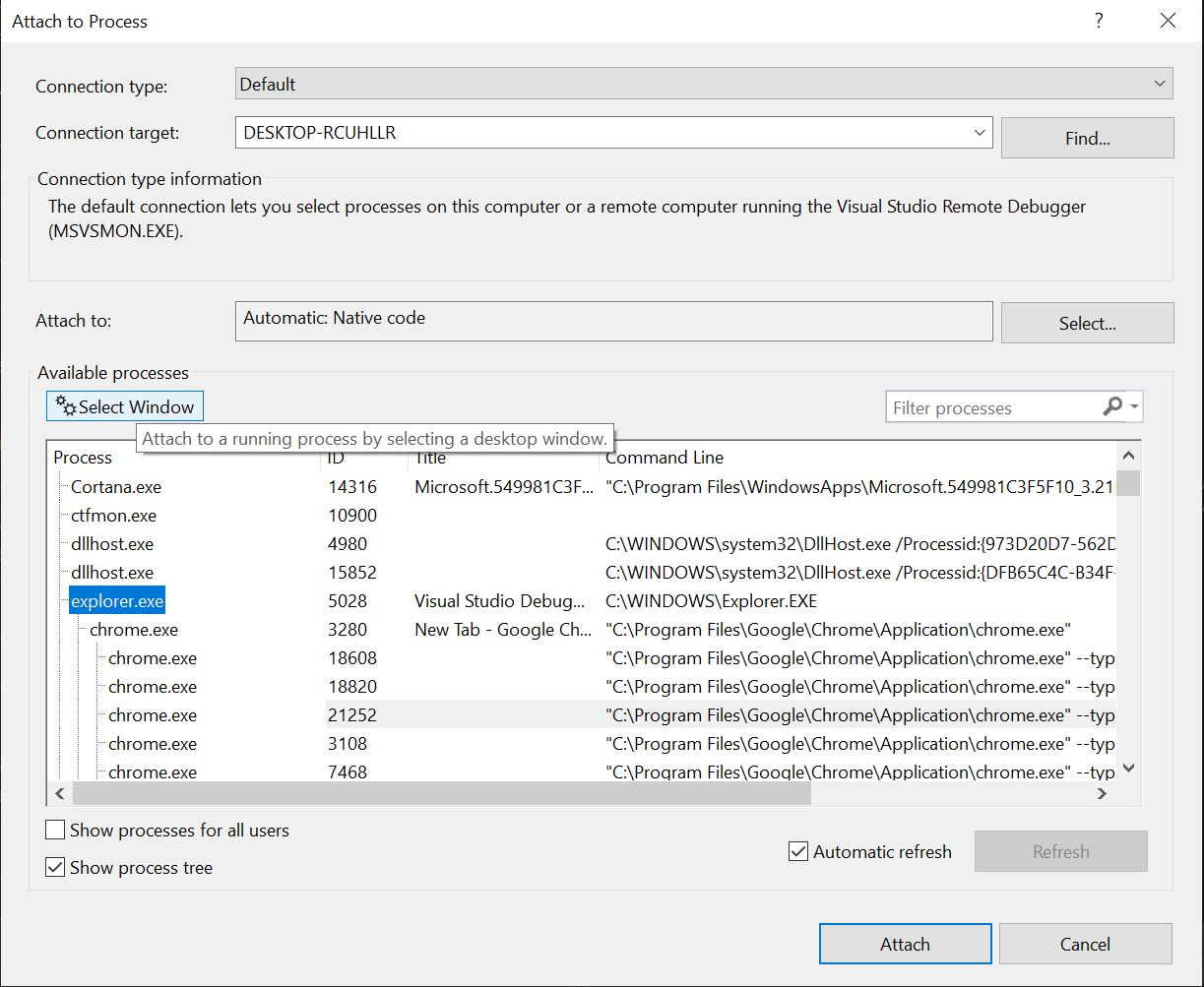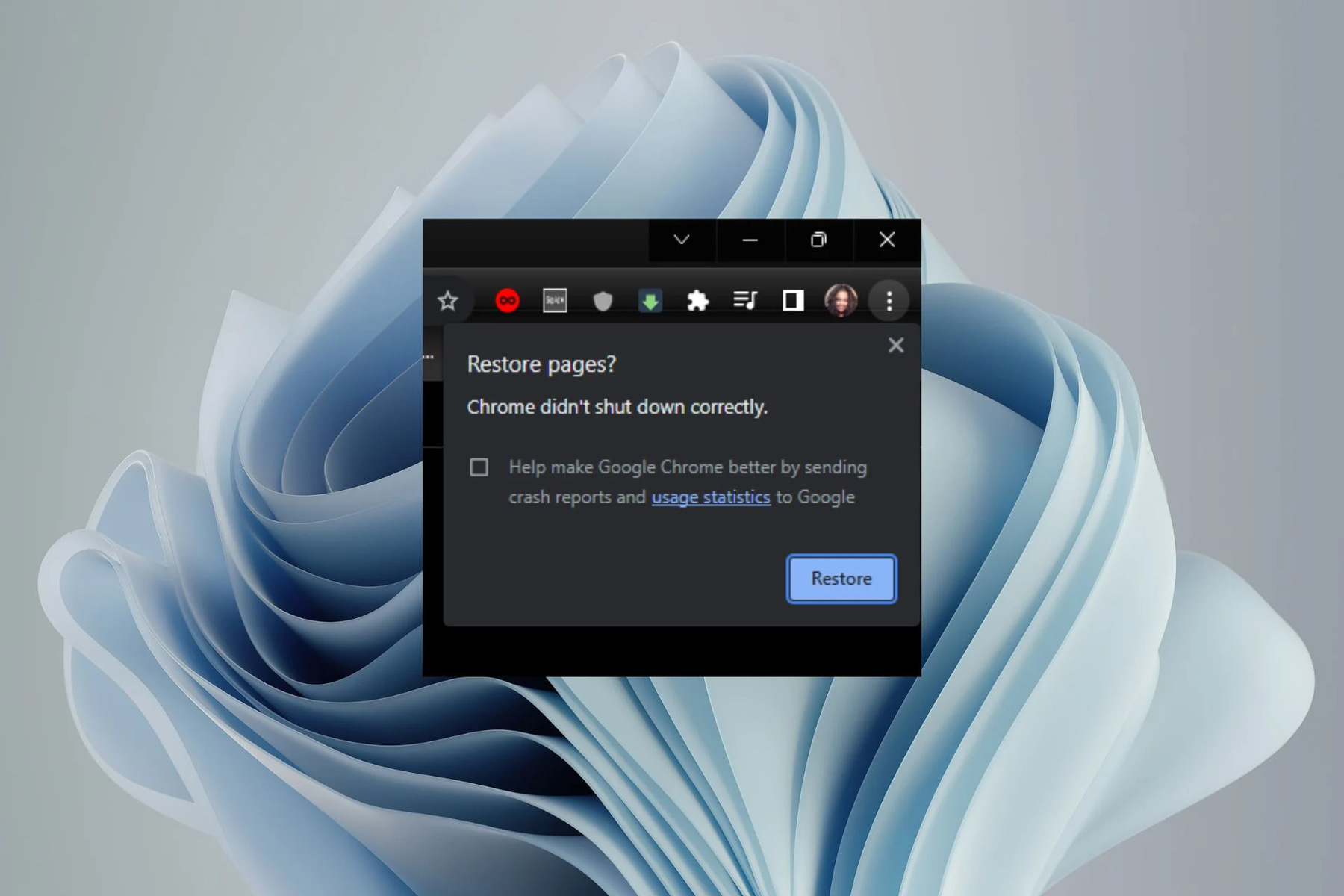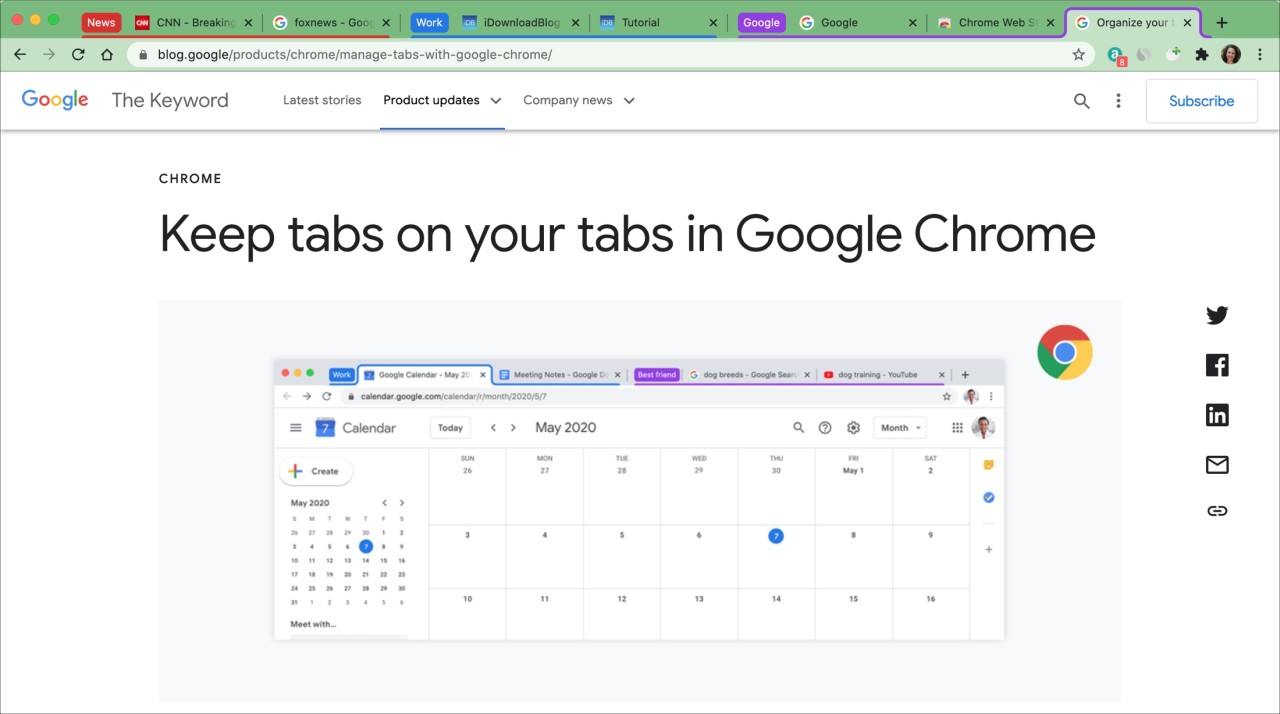Introduction
Closing tabs in the Chrome browser is a fundamental skill that every user should master. Whether you're a casual internet surfer or a power user with multiple tabs open at once, knowing how to efficiently close tabs can streamline your browsing experience and keep your browser organized. In this article, we'll explore various methods for closing tabs in Chrome, catering to different preferences and usage scenarios.
As we delve into the different techniques, it's important to note that mastering these methods can significantly enhance your browsing efficiency. Whether you prefer using your mouse, keyboard shortcuts, or context menus, there's a method that suits your style. By familiarizing yourself with these techniques, you can navigate through your tabs effortlessly, declutter your browsing space, and optimize your overall browsing experience.
Now, let's embark on this journey to discover the diverse ways of closing tabs in Chrome. Whether you're a tech-savvy individual seeking to boost productivity or a newcomer to the digital realm, these methods will empower you to navigate the web with ease and finesse.
Method 1: Using the mouse
Using the mouse to close tabs in Chrome is a straightforward and intuitive method that many users find convenient. Whether you're a visual learner who prefers clicking over keyboard shortcuts or simply enjoy the tactile feedback of using a mouse, this method offers a seamless way to manage your tabs.
To close a tab using the mouse, simply navigate to the tab you wish to close and position your cursor over the tab. Once your cursor is hovering over the tab, you'll notice a small "x" icon appear on the right-hand side of the tab. This "x" serves as the universal symbol for closing or removing an element, and in this case, it represents the option to close the tab.
With the "x" icon visible, a single click on it will promptly close the tab, removing it from your browsing session. This action is swift and efficient, allowing you to seamlessly declutter your tab bar and focus on the remaining open tabs.
Furthermore, Chrome offers a convenient feature that enables users to close multiple tabs simultaneously using the mouse. By holding down the "Ctrl" key on your keyboard and clicking on multiple tabs with your mouse, you can select multiple tabs at once. Once you've made your selections, simply release the "Ctrl" key and right-click on any of the highlighted tabs. From the context menu that appears, choose the "Close tabs" option to swiftly close all the selected tabs in one fell swoop.
This method is particularly useful for users who frequently find themselves with an abundance of tabs open and wish to streamline their browsing experience. By leveraging the power of the mouse and Chrome's intuitive interface, you can effortlessly manage your tabs and maintain a tidy browsing environment.
In essence, using the mouse to close tabs in Chrome offers a user-friendly and visually guided approach to tab management. Whether you're closing tabs one by one or utilizing the multi-tab selection feature, this method provides a seamless and efficient way to declutter your browsing space and stay organized as you navigate the web.
Method 2: Using the keyboard
Utilizing keyboard shortcuts to close tabs in Chrome is a swift and efficient method that appeals to users who prefer navigating their browsers without relying heavily on the mouse. This approach not only streamlines the tab-closing process but also caters to individuals who are accustomed to using keyboard commands for various tasks.
The primary keyboard shortcut for closing a tab in Chrome is remarkably simple and intuitive. To close the currently active tab, users can simply press the combination of keys "Ctrl + W" on Windows or "Command + W" on Mac. This action promptly closes the active tab, allowing users to seamlessly transition to the next tab in their browsing session. The "Ctrl + W" or "Command + W" shortcut is a quick and convenient way to declutter your tab bar without the need to reach for the mouse.
In addition to closing the active tab, Chrome offers a keyboard shortcut that enables users to swiftly navigate through their open tabs while closing them simultaneously. By pressing "Ctrl + Shift + Tab" on Windows or "Command + Option + Left Arrow" on Mac, users can cycle through their tabs in reverse order, effectively selecting and closing each tab as they navigate backward. This method is particularly useful for users who wish to quickly close multiple tabs in succession without interrupting their browsing flow.
Furthermore, Chrome provides a keyboard shortcut that allows users to reopen a closed tab, providing a safety net for accidental closures. By pressing "Ctrl + Shift + T" on Windows or "Command + Shift + T" on Mac, users can restore the most recently closed tab, effectively undoing the closure and restoring their browsing session to its previous state. This feature is invaluable for users who inadvertently close tabs and need to retrieve them without disrupting their workflow.
In essence, using the keyboard to close tabs in Chrome offers a seamless and efficient approach to tab management. Whether users prefer the simplicity of closing the active tab with "Ctrl + W" or the versatility of navigating and closing tabs with other shortcuts, this method empowers users to streamline their browsing experience and maintain a tidy tab bar with minimal effort.
By mastering these keyboard shortcuts, users can navigate through their tabs with finesse, swiftly closing unnecessary tabs and effortlessly restoring accidentally closed tabs. This method exemplifies the convenience and flexibility that Chrome offers, catering to users with diverse preferences and enhancing their overall browsing efficiency.
Method 3: Using the context menu
Using the context menu to close tabs in Chrome provides a versatile and user-friendly method for managing tabs with precision and efficiency. The context menu, accessed through a right-click or a long-press on a touch-enabled device, offers a range of options for interacting with tabs, including the ability to close individual tabs, groups of tabs, and even tabs from specific websites.
To close a single tab using the context menu, simply right-click on the tab you wish to close. This action triggers the appearance of a contextual menu, presenting a variety of options tailored to tab management. Among these options is the "Close tab" command, which, when selected, promptly removes the targeted tab from your browsing session. This method is particularly useful for users who prefer a visual and menu-driven approach to tab management, allowing for precise control over individual tabs without relying solely on keyboard shortcuts or mouse interactions.
In addition to closing individual tabs, Chrome's context menu offers a convenient feature that enables users to close multiple tabs simultaneously. By right-clicking on any tab and holding down the "Ctrl" key on Windows or the "Command" key on Mac, users can select multiple tabs by clicking on each tab they wish to close. Once the desired tabs are selected, releasing the "Ctrl" or "Command" key and right-clicking on any of the highlighted tabs reveals the context menu, where users can choose the "Close tabs" option. This action swiftly removes all the selected tabs, streamlining the tab-closing process and decluttering the browsing space with ease.
Furthermore, the context menu in Chrome offers an efficient way to close tabs from specific websites. By right-clicking on a tab from a particular website and choosing the "Close tabs to the right" or "Close other tabs" option from the context menu, users can effectively manage tabs related to a specific website. This feature is invaluable for users who wish to tidy up their browsing session by selectively closing tabs based on their browsing patterns and preferences.
In essence, using the context menu to close tabs in Chrome provides a comprehensive and visually guided approach to tab management. Whether users are closing individual tabs, selecting and closing multiple tabs, or managing tabs from specific websites, the context menu offers a versatile and intuitive method for decluttering the browsing space and maintaining a streamlined tab bar. By leveraging the power of the context menu, users can navigate through their tabs with precision and efficiency, enhancing their overall browsing experience.
Conclusion
In conclusion, mastering the art of closing tabs in Chrome is a fundamental skill that can significantly enhance your browsing experience. Whether you prefer using the mouse for visual guidance, leveraging keyboard shortcuts for swift navigation, or utilizing the context menu for precise tab management, Chrome offers a diverse array of methods to cater to your preferences and streamline your tab-closing process.
By familiarizing yourself with these methods, you can navigate through your tabs effortlessly, declutter your browsing space, and optimize your overall browsing efficiency. The ability to efficiently close tabs not only promotes a tidy and organized browsing environment but also empowers you to maintain focus and productivity as you navigate the web.
Furthermore, understanding the keyboard shortcuts for closing tabs, navigating through open tabs, and reopening closed tabs can significantly boost your browsing efficiency. The seamless integration of these shortcuts into your browsing routine allows for swift and precise tab management, enabling you to declutter your tab bar with minimal effort and seamlessly transition between tabs.
Additionally, the context menu in Chrome serves as a versatile tool for tab management, offering a range of options for interacting with tabs and tailoring your browsing experience to your specific needs. Whether you're closing individual tabs, selecting and closing multiple tabs, or managing tabs from specific websites, the context menu provides a visually guided and comprehensive approach to tab management, empowering you to maintain a tidy and streamlined browsing space.
In essence, mastering the various methods for closing tabs in Chrome equips you with the tools to navigate the web with finesse, declutter your browsing space, and maintain a seamless and organized tab bar. Whether you're a casual internet surfer or a power user with multiple tabs open at once, these methods offer a user-friendly and efficient way to manage your tabs, enhancing your overall browsing experience.
As you continue to explore the vast expanse of the internet, remember that the ability to efficiently close tabs in Chrome is not just a technical skill but a gateway to a more streamlined and enjoyable browsing experience. Embrace these methods, integrate them into your browsing routine, and witness the transformative impact they have on your digital journey.

























